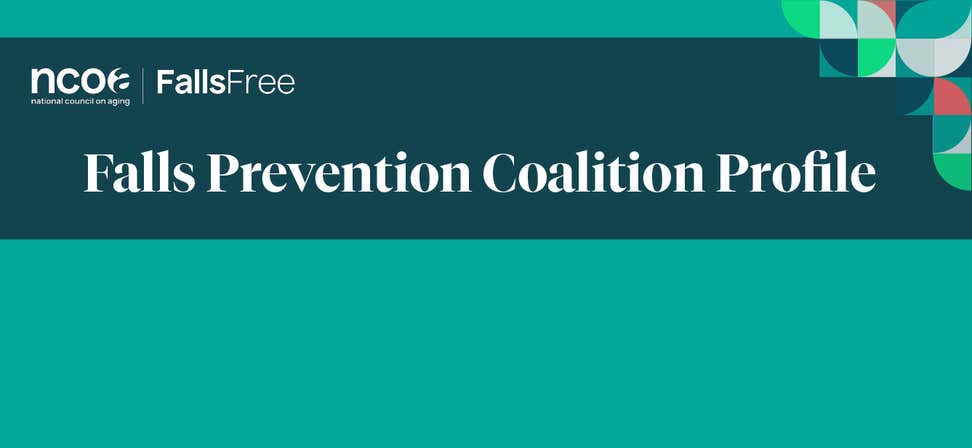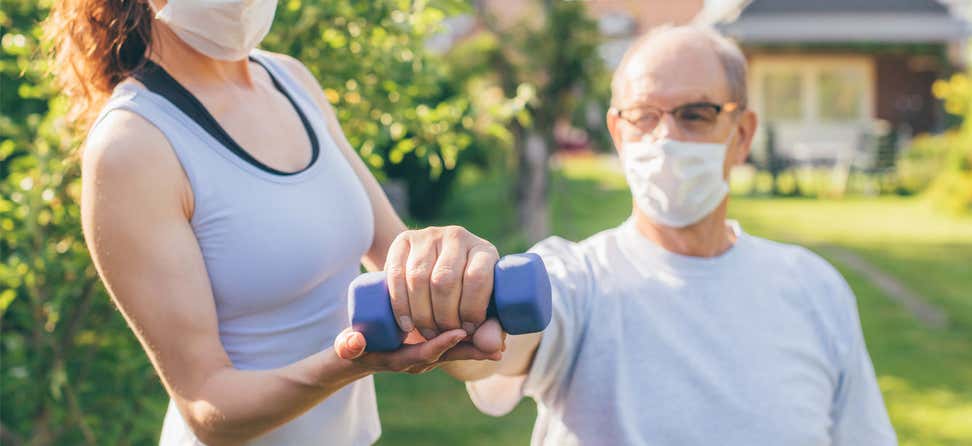Key Takeaways
Falls prevention coalitions can bring together organizations and providers that need to collaborate to reduce falls, identify state or community needs, recommend policy changes, and build capacity.
Explore the Illinois State Falls Prevention Coalition, including their goals, objectives, and activities, and learn how they educate their community about older adult falls.
The Illinois Fall Prevention Coalition was initially envisioned by Elizabeth (Liz) Peterson of the University of Illinois of Chicago and Robyn Golden and Dana Bright of Rush University. Through a series of initial meetings in the fall of 2008, prospective members of a core coalition group were identified and invited to join the coalition. Core coalition members have evolved over time but continue to represent an interprofessional group with diverse skills, interests, and networks. The core group members come from academic, clinical, public health and community service backgrounds. Many of those individuals hold leadership positions where they work.
The original core members contributed to the development plan for the Illinois coalition. The initial phase of the development plan centered around understanding the scope of the problem of falls in Illinois and gaining a better understanding of Illinois-based fall prevention efforts. Jennifer Martin, Injury and Violence Prevention Project Manager, Violence and Injury Prevention Section, Office of Health Promotion, Illinois Department of Public Health (IDPH), has been a core member of the coalition since its founding and has been instrumental to making epidemiological data describing the burden of falls and fall-related injuries in Illinois accessible. That data is provided in the IDPH 2018-2022 State Strategic Plan to Prevent Injury, Violence, and Suicide, which is available by searching for Making Illinois Safer: Strategic Plan 2018-2022, or by going to: https://sprc.org/sites/default/files/MakingIllinoisSafer_2018-2022_StrategicPlan.pdf. The document helps to raise awareness and inform state partners and communities about fall injury prevention efforts.
Illinois-based fall prevention efforts are now documented in the Illinois Fall Prevention Directory, created by Michael Svete, Associate Director, White Crane Wellness Center. Any coalition member can use the Directory to describe fall prevention programs, resources and series they, or their organizations provide. The Directory is available at whitecranewellness.org. AgeOptions, the Area Agency on Aging that serves suburban Cook County IL, operates a statewide network hub of evidence-based interventions called the Illinois Pathways to Health. Programs designed to teach participants to reduce their fall risk and fear of falling are included.
Findings from the initial phase of the coalition’s development plan continue to inform the coalition’s priorities. The Illinois coalition now has over 150 members to support networking in the state. The coalition’s progress in improving older adults’ access to evidence-based fall prevention programs is significant and can be attributed to the steadfast commitment of the coalition members, all of whom participate in coalition efforts on a volunteer basis.
Current goals and objectives for the Illinois Falls Prevention Coalition
- Goals:
- Create a broad network of individuals in the state of Illinois with an interest in fall prevention.
- Disseminate fall prevention resources.
- Support the delivery of evidence-based programs fall prevention programing
- Share news regarding IL-based fall prevention efforts with the NCOA.
- Objectives:
1a. Register over Coalition 75 members by March 2013. (Objective met)
1b Develop an IL Fall Prevention Coalition Directory by September 2016. (Objective met)
2a. By August 2011, create a sustainable process to provide each Coalition member with an eNewsletter describing fall prevention resources. (Objective met)
2b. Develop a mechanism that enables each Coalition member to report fall prevention services or resources they offer via the IL Fall Prevention Coalition Directory by September 2016. (Objective met)
2c. Explore strategies to create and sustain a Coalition website by August 2023 (In progress)
3a. By September 2018, develop a process to offer CEUs to health care providers participating in Coalition-sponsored conferences or seminars. (Objective met)
3b. By August 2011, create a sustainable process to provide each Coalition member with an eNewsletter that may include:
- submissions describing research or programmatic findings;
- announcements designed to recruit participants in fall prevention research projects;
- descriptions of availability and/or features of evidence-based programs
4a. By September 2013, create processes to collect, synthesis and share IL-based Fall Prevention Awareness Day/Week activities to the NCOA annually. (Objective met)
4b. By December 2021, identify core members of the IL Fall Prevention Coalition available to participate in Quarterly State Coalitions on Fall Prevention Work Group calls. (Objective met)
Leadership for the Illinois Falls Prevention Coalition
- University of Illinois, Chicago (E. Peterson, M. Koronkowski, J. Hammel)
- Illinois Department of Public Health (J. Martin)
- Illinois Community Health and Aging Collaborative (M. O'Donnell)
- Rush University Medical Center (R. Smith, P. Stanley)
- White Crane Wellness Center (M. Svete)
Leadership Contact Information
- Elizabeth (Liz) Peterson, PhD, OTR/L, FAOTA
University of Illinois Chicago
epeterso@uic.edu
Key Partners for the Illinois Falls Prevention Coalition
- Age Options
- Illinois Department of Public Health
- Illinois Community Health and Aging Collaborative
- Rush University Medical Center
- University of Illinois, Chicago
- White Crane Wellness Center
What has the Illinois Falls Prevention Coalition achieved?
- In 2022, 32 cycles of Matter of Balance were provided by 12 organizations, with a participant completion rate of 81% (283/348).
- The Coalition has supported over 10 Illinois-based fall prevention research projects by providing letters of support, contributing to recruitment efforts and supporting dissemination of research findings. These research project support the fall prevention efforts of older adults as well as unique patient populations (e.g., ambulatory and non-ambulatory people living with multiple sclerosis, people living with spinal cord injury).
What are some current challenges for the Illinois State Falls Prevention Coalition?
- The Coalition is a volunteer organization that does not have a funding source.
- Members of the Coalition leadership team have work priorities that must be addressed before Coalition-related work can be undertaken.
What evidence-based falls prevention programs are currently offered by the Illinois State Falls Prevention Coalition?
- A Matter of Balance
- Fit and Strong!
- Bingocize
- Arthritis Foundation Exercise Program
- Chronic Disease Self-Management Program (CDSMP)
- Tai Chi for Arthritis and Fall Prevention
- Tai Chi (Other)
- Walk with Ease
What outcomes are monitored by the Illinois Falls Prevention Coalition?
- Number of members
- Number of e-newsletters delivered annually









